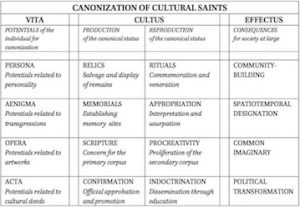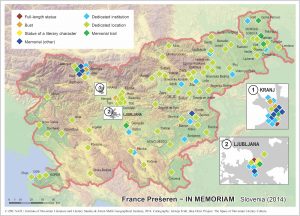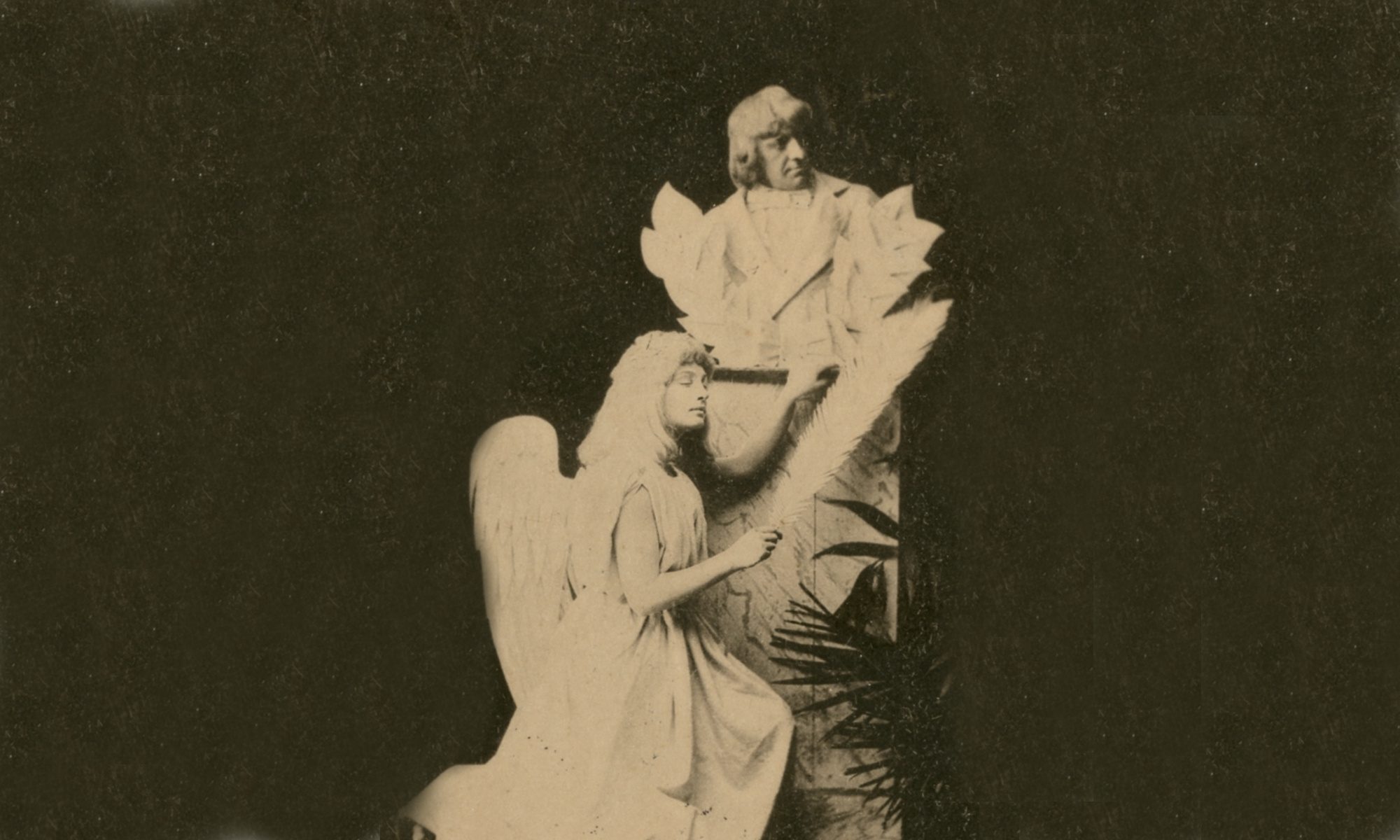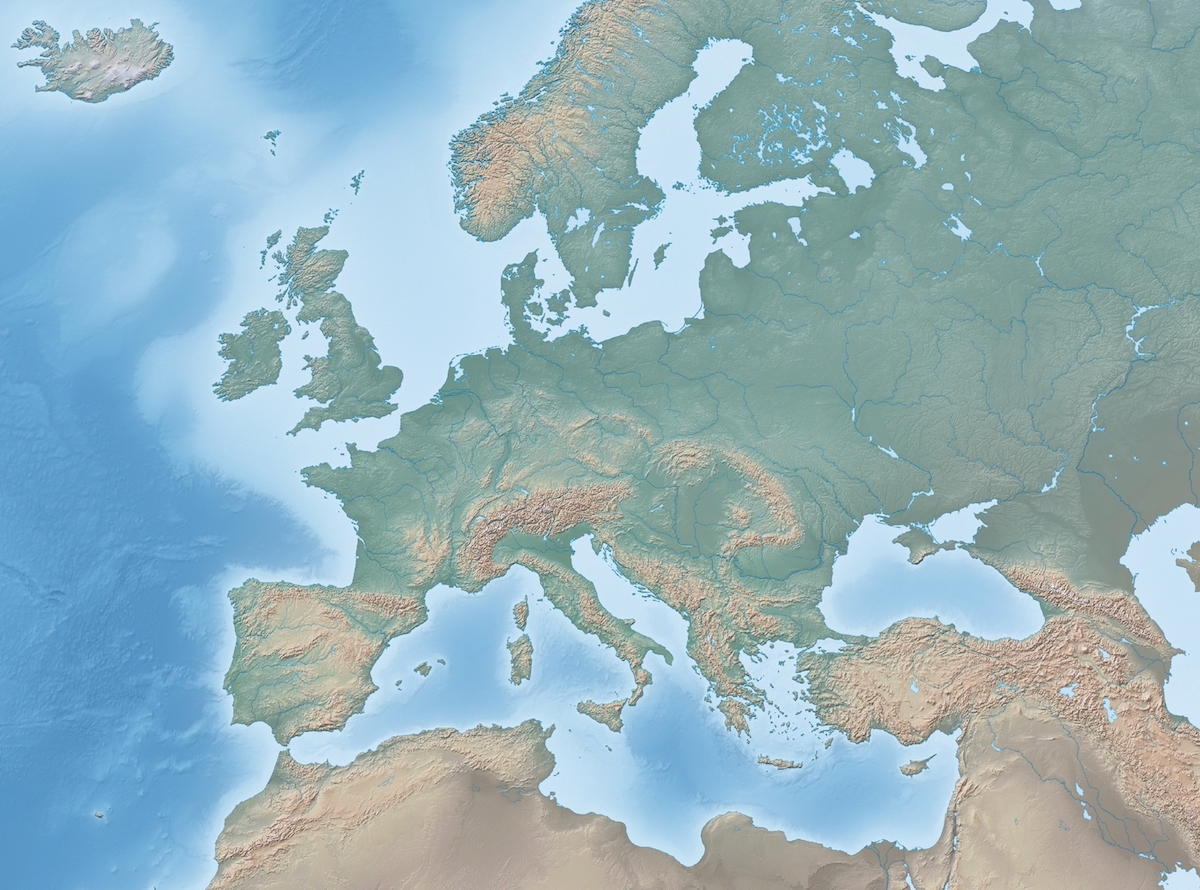The research project “National Poets and Cultural Saints of Europe: Commemorative Cults, Canonization, and Cultural Memory” (J6-6486; October 1, 2014 – September 30, 2017) was funded by the Slovenian Research Agency (ARRS). The project team was headed by Marijan Dović and included eleven researchers (eight from the Research Centre of the Slovenian Academy of Sciences and Arts [ZRC SAZU], three from University of Ljubljana).
SUMMARY
The project examines a hitherto poorly researched area. It uses a comparative approach to identify and describe the patterns of commemoration and canonization of national poets and other artists as a specific set of practices that spread across Europe like a wave, starting especially in the 1840s in the context of cultural nationalism. These practices are studied on the basis of the expanded concept of canonization (in addition to textual practices such as critical edition, exegesis, appropriation, and indoctrination, the concept also includes ritual practices, the use of relics, monumental networks, the role of the educational apparatus, etc.) and treated in the context of the establishment of new imagined communities and their (collective) cultural memory. In this way, the project seeks to reappraise the role of continuous veneration of chosen representatives in the process of forming European nations—especially smaller ones, where the emphasis on literature and language was even greater. At the same time, the project strives to demonstrate that the effectiveness of this formation is more easily explained if one takes in account the elements that bring national movements into the vicinity of religious practices. Through an interdisciplinary and international combination of literary studies with other disciplines, the project seeks to permanently contribute to a better understanding of the underlying structures that still define the relationships and tensions between modern societies in Europe.
The primary goals of the project include refinement of the prevailing concepts in the relevant field of literary studies (national poets, cultural saints, the canon and canonization, commemorative cults, etc.) and subsequent construction of a basic model of the study of canonization in the broader cultural context. This theoretical and methodological framework is critically tested by a number of diverse case studies. The main focus remains on the canonization of national poets, with case studies spanning from Russia (Alexander Pushkin) to Portugal (Luís de Camões) and from Greece (Dionysios Solomos) to Iceland (Jónas Hallgrímsson). This broad European panorama is also presented in the form of a bilingual (English and Slovenian) website devoted to National Poets and Cultural Saints of Europe. A number of articles and book chapters are devoted to individual examples from “small nations”; for instance, to the Czech national poet Karel H. Mácha, the Bulgarian national poet and revolutionary Hristo Botev, and the Montenegrin national poet and clerical and secular ruler Petar II Petrović-Njegoš. To offer a comparative contrast, individual studies deal with some of the most prominent figures of “major literatures” that were crucial for the dissemination of models of commemorative cults throughout Europe (William Shakespeare, Friedrich Schiller, etc.), and several cases of other artists that were the subject of veneration in the context of cultural nationalism. Special attention is given to the canonization of the Slovenian poet France Prešeren, which represents a complex case even in the broader European context.
KEYWORDS
national poets, cultural saints, literature, nation-building, cultural nationalism, commemorative cults, literary canon, canonization, cultural memory, memorials, Europe
SCHOLARLY BACKGROUND
The project “National Poets and Cultural Saints of Europe” uses comparative approaches to strengthen and synthesize the existing partial studies of the patterns of commemoration and canonization of national poets and other artists throughout Europe. The project addresses various cultural figures that were objects of veneration (usually posthumously) in the context of nineteenth-century national movements; in the process of canonization, these figures became representatives of their respective national cultures and can in many respects thus be included within the concept of “cultural saints.” Due to the prevalent fetishism of linguistic practices in the matrix of cultural nationalism, the most prominent figures were “men of letters,” especially poets, but often also composers, painters, and even linguists. Particularly marked was the canonization of “national poets” (from Jónas Hallgrímsson and Robert Burns to Hristo Botev and Dionysios Solomos, and from Luís de Camões and Miguel de Cervantes to Adam Mickiewicz and Alexander Pushkin). Although these figures lived in different periods, they all became objects of commemorative cults in the second half of the nineteenth century, and in all cases the process of their canonization continues to the present day.
In national scholarly traditions, these figures are thoroughly researched in terms of biography, œuvre, influence, etc.; the corresponding corpus of studies is often excessively large (consider Shakespeare studies, Prešeren studies, Mácha studies, Pushkin studies, etc.). While these rigorous scholarly traditions are themselves important elements of the process of canonization, this process itself is poorly researched even in the case of hypercanonical figures of international stature; usually, the data is accessible in national languages only. Nonetheless, the material that is available makes it possible to develop the necessary methodological and analytical tools, including a model of canonization. This model strives to improve the prevailing text-oriented views of the canon and to enrich them with findings and approaches of anthropology and cultural studies as well as with contemporary re-conceptualizations of textuality itself. This expansion highlights areas that have often been neglected: ritual practices, the use of relics, memorial sites, the school apparatus, the political aspects of the canon, etc.
RESEARCH PROBLEMS
- National poets and cultural saints – theoretical foundation:
- a definition of “national poets” and “cultural saints”;
- a delimitation of religious and (secular) cultural aspects of canonization;
- an assessment of the role of cultural saints in the (re)production of cultural memory in the context of the “imagining” of European nations, with special emphasis on the differences between ethnic groups with and without a nation-state (verification of the hypothesis about the specific importance of cultural saints for ethnic groups without a nation-state).
- Canon and canonization – theoretical foundation:
- a systematization of the concept of “canonization” in a broad cultural context;
- an examination of individual elements of the canonization model;
- a verification of hypotheses concerning the special importance of certain aspects of canonization (memorial sites, school apparatus, intertextuality, ideological appropriation).
- Canonization of national poets and other cultural saints – a comparative perspective:
- identification and description of the structural patterns of canonization (based on empirical material from 1840 onwards);
- a typology of different models of canonization;
- analyses of liminal and hybrid cases.
- The canonization of France Prešeren in the Slovenian and European contexts – a case study:
- an investigation into the relations between Prešeren and his “rivals” (Vodnik, Koseski) as well as “antitheses” (Vraz), and between the (cultural) canonization of Prešeren and the (religious) canonization of Slomšek;
- a reappraisal of the prevailing scholarly and journalistic theses on Prešeren (such as those about the “Prešeren structure” and the “Slovenian cultural syndrome”);
- a contextualization of Prešeren in relation to other national poets (particularly those of so-called small nations).
OBJECTIVES, METHODS, AND EXPECTED RESULTS
The principal objectives of the project are:
- A multilevel theoretical model of canonization (survey article, several research articles);
- A theoretical concept of cultural saints (several research articles and/or book chapters);
- A comparative overview of canonization of national poets and other artists in Europe (from Iceland to Bulgaria, and from Portugal to Russia) from the mid-nineteenth century to the present (an English book and several research articles and/or book chapters);
- A detailed study of the canonization of France Prešeren as a paradigmatic case in the Slavic and central European context, including a comprehensive study of material memorial culture employing GIS mapping (a Slovenian conference, a Slovenian book, and several research articles and/or book chapters);
- A platform for international exchange in the study of national poets and cultural saints (international conference, website);
- Scholarly presentation of Slovenian literary culture in the Encyclopedia of Romantic Nationalism in Europe (54 entries).
Methodologically, this interdisciplinary and comparative project combines methods of literary studies (theoretical conceptualization, textual analysis, textual criticism, and comparative synthesis) with analytical tools of historiography, cultural and art history, anthropology, and geography (GIS-mapping).
The results of the project are presented in the form of the following deliverables:
- Individual research articles and/or book chapters in Slovenian and international academic journals and scholarly books;
- A Slovenian conference on canonization and cultural saints (in Ljubljana, 2015);
- A thematic panel on European national poets (in Galway, August 2015);
- An international workshop on cultural saints (in Amsterdam, November 2015)
- A Slovenian book with 20 contributions, edited by the principal investigator (ZRC SAZU, 2016)
- A thematic section of Arcadia, edited by the principal investigator (2017)
- An English book, co-authored by the principal investigator and Jón Karl Helgason (Brill, 2017);
- A Slovenian book on France Prešeren by the principal investigator (LUD Literatura, 2017);
- A bilingual (Slovenian-English) website National Poets and Cultural Saints of Europe;
- The entries on representative individuals (20 entries), trends (21 entries), and institutions (13 entries) of Slovenian literary culture, for the Encyclopedia of Romantic Nationalism in Europe (ERNiE).
THE RELEVANCE OF THE PROJECT
The relevance of the proposed project can be demonstrated at several levels. In the strictly scholarly sense, it is distinguished by its innovative interaction of findings and approaches of traditionally rather disparate sections of the humanities; this interaction opens a new perspective on a series of historical phenomena that have played a vital role in European cultural and political history (particularly in the nation-building period). Based on a theoretical delineation of the object of study, the project seeks to introduce novel concepts into international scholarly communication and thereby enhance the impact of the Slovenian researchers and institutions associated with it. In a broader social sense, too, the relevance of the project can be observed at both the Slovenian and European levels. In Slovenia, the proposed study of the canonization of Prešeren can help overcome certain stereotypical self-descriptions (such as those of the “Slovenian cultural syndrome” and the “Prešeren structure”), and at the European level a number of developments in the twenty-first century (including the current Ukrainian crisis) have clearly shown that nationalisms are by no means a mere historical problem of the distant “long nineteenth century.”






